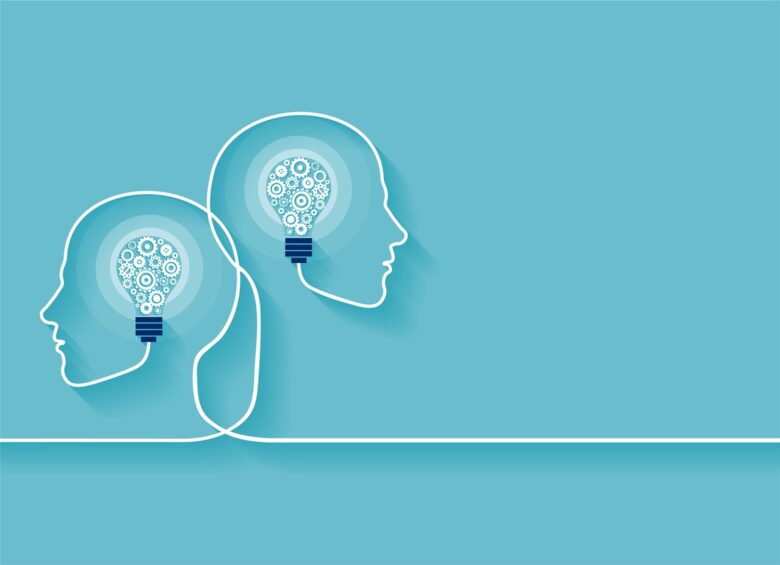In our ever-connected society, the term ‘digital wellbeing’ has become quite popular. But what does it actually mean? With technology becoming a fundamental part of our lives, it’s more important than ever to understand how to engage with it in a healthy way. From hours of scrolling through social media to endlessly checking emails, it’s easy to lose track of time and enjoyment in a digital environment.
Digital well-being is all about finding a balance between using technology and protecting our mental health. Limiting screen time is not the only important aspect of digital wellbeing; it’s equally important to intentionally develop technological practices that enhance rather than harm our lives. Let’s take a look at this essential roadmap for anyone looking to navigate the digital landscape with care and caution.
The Negative Impact of Technology on Our Well
Our daily lives are intertwined with technology. While it has some drawbacks, it also offers comfort. Too much screen time can cause physical problems, such as poor posture and eye strain. Mental health also suffers. Social media can sometimes generate excessive comparisons that cause sadness and worry. Constant notifications distract us from the present and make us feel overwhelmed.
Screens can also disrupt your sleep habits. The blue light from screens can inhibit the production of melatonin, disrupting your sleep or making it harder to fall asleep. In addition, reliance on electronic devices can weaken interpersonal relationships. When browsing through streams of information becomes the norm, personal conversations become secondary. These negative effects create a cycle that is difficult to break: the digital trap has a major impact on both body and mind.
Exposing Bad Tech Practices
Many people do not realize how much their technology practices affect their daily lives. Misused metrics can easily go unnoticed. Start by paying attention to your screen time. If you find yourself aimlessly surfing the internet for hours, that is a warning sign. Pay attention to how often you check for messages or alerts. Taking frequent breaks can affect concentration and productivity. Think about how you feel after using technology. Are you feeling tired or anxious? These feelings could indicate a disconnect in your online relationship.
Physical health is also a factor. Does prolonged use of electronic devices cause eye strain, headaches, or poor posture? These indicate the need for change. Think back to relationships. If technology has replaced face-to-face conversations with loved ones, it may be time to reevaluate priorities and methods of connecting. Recognizing these trends is essential to developing better technology habits that enhance rather than detract from your quality of life.
Tips for Developing a Digital Health Plan
Start by evaluating your current technology practices. Track how much time you spend on your gadget each day. Awareness is the first step to transformation. Set specific goals to reduce screen time. You may want to schedule a time each day when you are not using technology or limit your use of social media. Clear goals will help you stay focused. Be sure to schedule breaks into your schedule. Use methods like the Pomodoro technique, which allows you to quickly complete work and then take short breaks. These breaks help your body and mind recover.
Find other activities that don’t involve screens. Reading, exercising, or spending time with friends can be effective alternatives to digital distractions. Consider using apps designed to promote digital well-being. They can track your usage patterns and advise you to take breaks. The data will help you make better decisions without causing you too much stress. Building new habits takes time and persistence, so be patient with yourself during this transition.
Creating a Balance Between Technology and Real Life
To achieve mental clarity, you need to find harmony between technology and your daily life. Start by limiting your use of technology. Set aside enough time to check your email or surf social media. Engage in offline activities that make you happy. Whether it’s reading, walking, or drawing, you can enjoy a moment without the distraction of a screen. Consider creating a technology-free zone in your home. Your bedroom or dining room can be a place where you’re free from the distractions of technology and can talk freely.
Schedule daily downtimes away from your devices. A quick walk outside can clear your mind and spark inspiration. Mindfulness techniques can also help you interact better with technology. Living in the moment can help you appreciate both your digital and real-life experiences. To build stronger relationships outside of online platforms, find hobbies that encourage real-life interactions with family and friends.
Digital Tools for Health Maintenance
There are several tools that can help you promote your digital well-being. Some apps, like Screen Usage or Moments, focus on monitoring screen usage. These technologies can help you gain insight into usage trends. Apps like Headspace and Calm promote mindfulness and meditation by giving people strategies to manage the stress of being constantly online. They encourage a moment of reflection away from screens.
Books on digital detox offer insightful analysis of habit change. Books like Digital Minimalism by Cal Newport offer insight on how to achieve balance in a tech-filled life. Digital well-being is another area where online groups can help. Through conversations, you can share your struggles and successes and learn from the experiences of others. Consider a webinar or training specifically focused on using technology effectively. By learning techniques from professionals, you’ll gain useful tools for better interacting with devices.
Conclusion
Digital well-being is a necessary strategy for our tech-driven lives, not just a trend. By forming positive habits, you can improve your physical health, enhance your relationships, and increase your mental clarity. As we become more aware of how we use technology, small changes can have a big impact. By freeing up time from screens, we can build deeper connections with ourselves and the people around us.
Finding the right balance between technology and real life is an ongoing quest. While it requires awareness and purpose, it will ultimately yield rewarding results. Find resources (books, apps, or online communities) that speak to you and help you achieve your digital well-being goals. Many people are working daily to strengthen their relationship with technology. Remember, you are not on this journey alone.
FAQs
1. What is digital well-being?
Digital health is the practice of using technology to improve rather than harm your health. It focuses on developing positive behaviors around social media use and screen time.
2. Why is digital health so important?
As technology becomes more and more a part of everyday life, it is crucial to prioritize your mental health and physical well-being. Digital well-being can help prevent symptoms such as worry, stress, and loneliness that can arise from excessive screen use.
3. How do I recognize bad tech practices?
Signs of anxiety when you stop using your phone or unpleasant feelings when you use social media are red flags. Spending more time online than you do on current affairs is also a warning sign.
4. How can I improve my digital well-being?
First, set the limits of your gadget use. Make sure you don’t have time for technology during meals or before bed. To find a balance in your life, you can develop hobbies that keep you away from screens.
5. Are there apps that support digital well-being?
Absolutely! Consider using apps such as Moment of Forest, which aim to monitor your screen time and promote more mindful usage.




